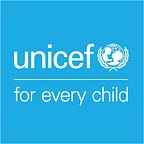21 December 2017
Scars of war
The scars of war run deep on eastern Ukraine’s youngest citizens after nearly four years of volatile conflict.
Photographer Ashley Gilbertson travelled with UNICEF to the line that divides the government and non-government controlled areas in eastern Ukraine to capture the lives of children living in one of the most mine-contaminated places on earth. Thousands of rounds of unexploded ordnance now litter fields and civilian areas, and there is regular shelling around homes and schools.
Aleksey, 14, has lost two fingers and a thumb — “Something fell from a passing military vehicle. I wasn’t sure what it was, it looked like a pen,” Aleksey says. “I picked it up, and it exploded. My first feeling was shock and pain. I looked down and saw my fingers were hanging from my hand.”
“My whole life has changed,” Aleksey, 14, says. “I can’t do everything I could do before without my fingers, but I’m getting used to it. I’m learning how to write with my left hand, it’s not very good yet, but I’m trying. Sometimes I’m getting upset up until the moment when I break into tears.”
Vadim, 9, has scars and a metal plate in his head — “I was with my brother in the yard,” he recalls. “We heard something fly towards us and I felt pain in my shoulder. My brother was behind a tree. That saved him.” A year later he broke his leg and damaged his skull when a military vehicle hit him.
Vadim points to damage on his old home in Avdiivka, eastern Ukraine. He says he doesn’t know why the two sides are fighting, all he really knows is there are men in uniform everywhere, and that he’s afraid of them.
Misha, 9, had shrapnel removed from his brain in 2016. He was walking to his house when a shell dropped nearby — “I didn’t feel anything at that moment. I was just stunned, ” Misha says.
But a piece of shrapnel had hit him in his head, embedding in his brain.
Misha with his mother on a bike outside their home in Mariinka, eastern Ukraine.
After nearly four years of fighting Misha says “It’s not that scary here. I’m already used to shootings. They do it at night. When the shelling starts, I hide under my blanket, but I don’t think it will protect me.”
Anya, 13, plays in the yard at her grandmother’s house where she and her siblings now live after their home was twice destroyed by shelling in Avdiivka, eastern Ukraine. They are only allowed to play outside in their yard, but even there it is not safe.
Anya looks out of the window of her old, now destroyed, home.
“I used to be afraid a lot,” she says. “During heavy shelling, we hid in the cellar, and then we started hiding in the kitchen. Now there’s no glass in the kitchen, so we just sit on the bed. Now I don’t care at all. I’m not afraid anymore.”
Sasha, 12, at school in Avdiivka, eastern Ukraine. In August 2016, he was riding his bike close to home when a bullet shattered his ankle.
“They were shooting somewhere in the distance. But I didn’t hear the bullet fly or anything. Before this, I wanted to become a famous football player.”
Sasha walks to school with two friends. Because of the fighting and no heating, the local school only opens three times a week, with classes cut short to 20 minutes each. There used to be 20 students in his class, but that number has dwindled to ten as families have fled in search of safety.
